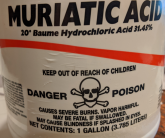FilterGuy
Solar Engineering Consultant - EG4 and Consumers
I did not like the thin buss bars that came with a set of cells I purchased, so I decided to make my own. I purchased .25" x .75" copper bar from a local metal supplier, cut and drilled them and then electroplated them with tin (They are destined for a boat).

I had never done electroplating before.... I pretty much followed the instructions on this site:
http://transistor-man.com/electroplating_busbar.html
I had to play around some with the current for electroplating and even then I was getting whiskers of tin that I had to wipe off now and then but it all came out fine. After the electroplating I used a wire brush wheel on a drill press to polish them.
Note: I will be putting heat-shrink on to minimize the exposed metal for a dropped tool to find.
Here are some other bus bars I made for the same project.

The post is tinned brass 3/8" all-thread. I tapped the bus-bar, threaded it in and then soldered it to lock it in.

I had never done electroplating before.... I pretty much followed the instructions on this site:
http://transistor-man.com/electroplating_busbar.html
I had to play around some with the current for electroplating and even then I was getting whiskers of tin that I had to wipe off now and then but it all came out fine. After the electroplating I used a wire brush wheel on a drill press to polish them.
Note: I will be putting heat-shrink on to minimize the exposed metal for a dropped tool to find.
Here are some other bus bars I made for the same project.

The post is tinned brass 3/8" all-thread. I tapped the bus-bar, threaded it in and then soldered it to lock it in.




